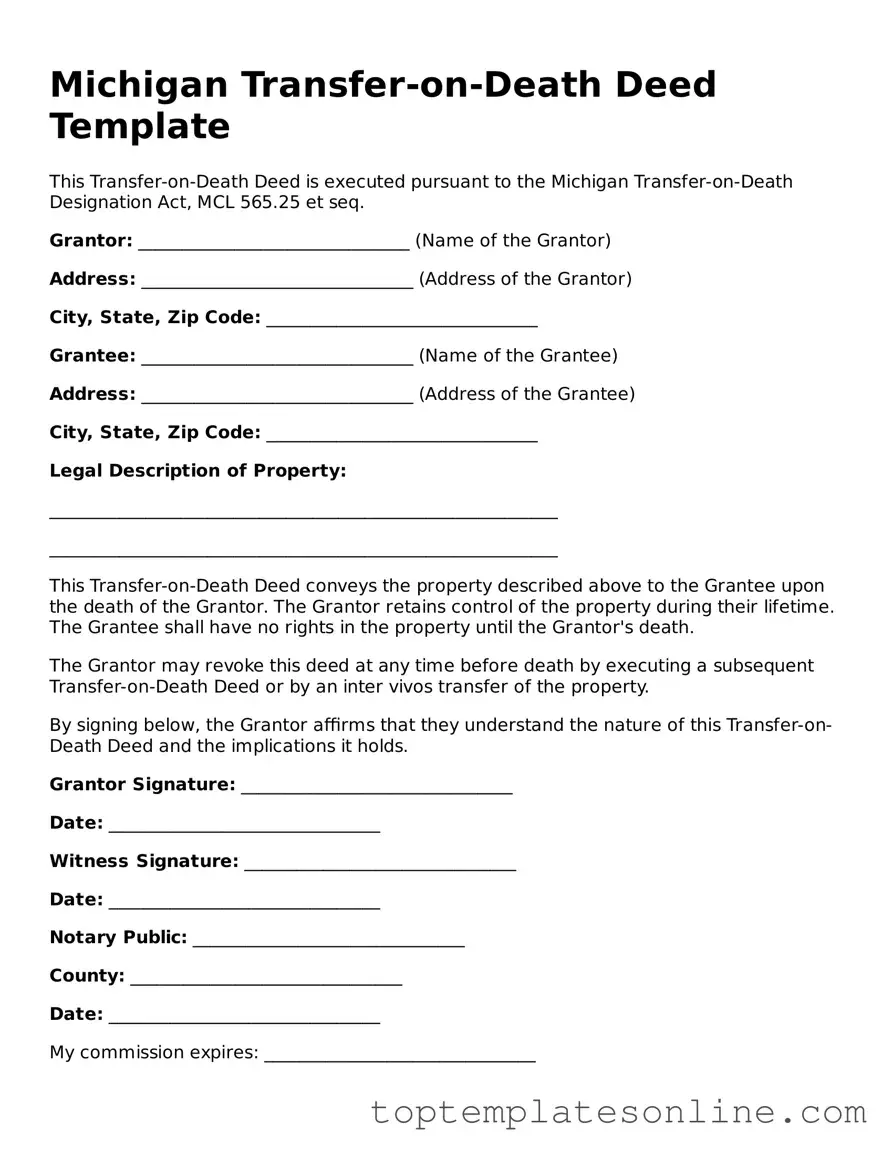Blank Transfer-on-Death Deed Template for Michigan State
The Michigan Transfer-on-Death Deed form is a legal document that allows property owners to designate a beneficiary who will automatically receive their property upon their passing, without the need for probate. This simple yet powerful tool can help streamline the transfer of real estate and provide peace of mind for property owners. Understanding how this deed works can make a significant difference in estate planning and ensure that your wishes are honored.
Customize Transfer-on-Death Deed Here
